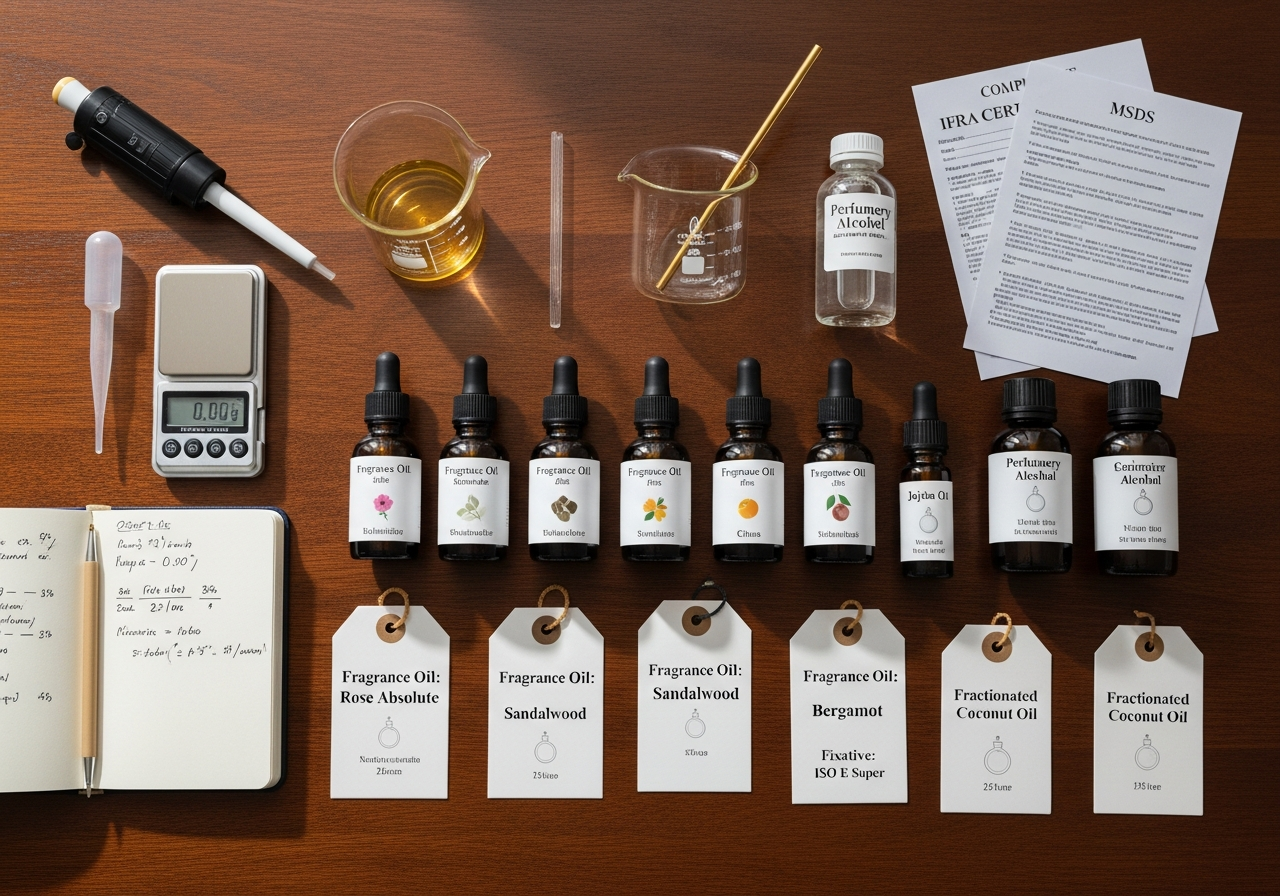
The global perfume market will reach USD 80.16 billion by 2030. This explains why personalised scents and bespoke perfumery are becoming more and more popular each day. It is therefore necessary for formulators to know how to use fragrance oil as perfume. It not only gives creative freedom but also a commercial edge.
Several formulators are looking to make a mark, and hence it is necessary to know how to use fragrance oils as perfume to conquer the largest market share. Understanding the professional techniques behind the transformation of fragrance oils into wearable perfumes provides both hobby creators and brands a pathway to craft signature scents with purpose.
In this article, we will explain what fragrance oil is and how it can be used in safe and effective perfume formulations, along with other important aspects.
A fragrance oil (also known as aromatic oil, aroma compound, or perfume oil) is typically a synthetic or semi-synthetic blend designed to mimic natural scents or create entirely novel ones.
Several fragrance oils for perfumes are created for multi-use, such as candles, soaps, diffusers, lotions, and perfumes. However, not all fragrance oils are formulated for skin contact or long-wear perfumery; thus, the caveat: using fragrance oils as perfumes requires professional formulation care.
When it comes to long-lasting, consistent, and commercially viable perfumes, choosing fragrance oils for perfumes is a better option than using natural essential oils.
Here is why fragrance oils have become the go-to ingredient for both artisanal perfumers and large-scale fragrance houses:
Fragrance oils can be used to make luxurious and long-lasting scents when the right technique is used. Let us look at a step-by-step guide that walks you through the professional process, from choosing the right oil to blending, ageing, and bottling the personalised perfume:
It is best to choose a perfumer's-grade fragrance oil or one that is explicitly labelled "skin-safe for fine fragrance". Next, download the certificate of conformity or IFRA compliance document to ensure safe usage levels.
The next process involves selecting the target profile, whether it will be a single-note perfume oil or multiple blends.
Primarily, there are two options when it comes to carriers for the fragrance oils. You can either select an alcohol-based spray perfume or an oil/serum-style perfume.
This is the classic "Eau de Parfum" style; alcohol helps with sprayability and evaporation of the carrier, leaving fragrance behind.
Uses carrier oils (jojoba, sweet almond, fractionated coconut, etc.). The final product is applied with a dropper or rollerball. This can offer more intimacy and a slower release of scent.
The ratio of fragrance oil to the carrier is quite important when it comes to creating the correct perfumes. Standard concentrations are:
The ratio can also be adjusted depending on the target market, price point, and skin performance.
This step first involves mixing and blending the fragrance oil and the carrier in a clean glass container.
Test and adjust the concentration as per requirements. If the scent is too strong, it can be diluted. In case the fragrance is weak, fragrance oil can be added (subject to safe usage limits).
Ensure that all equipment that is to be used is clean and sterilised. It is best to use dark glass bottles that can offer protection against light-induced degradation.
Label with fragrance name/code, batch number, concentration, and date. Also, it is best to store the bottles in a cool and dry place.
It is also ideal to mention the application and user guidance on the bottle. The information can also mention the concentration levels so that the user is informed.
Conduct skin patch tests (especially if using new fragrance oils or if you have sensitive skin). Formulators must also conduct stability tests like temperature cycling (cool/hot) and light exposure testing and check for changes in scent, colour, or clarity over time.
It is also essential to monitor performance in terms of longevity, projection, dry-down profile, and scent alter.
Professional formulators use advanced techniques to elevate fragrance oil-based perfumes. Here are those techniques:
Professional perfumers and formulators opt to build fragrance by combining top, heart (middle), and base notes, instead of one single fragrance oil.
Fixatives can be key to perfume longevity and dry-down behaviour. While many synthetic fragrance oils embed fixative behaviour, you may optionally incorporate:
Usually, alcohol-based sprays give greater initial projection (sillage) because the alcohol evaporates, leaving fragrance molecules to diffuse into the air.
On the other hand, oil-based perfumes sit closer to the skin and offer lower projection. However, it tends to have longer intimate wear and is appealing for "personal" scents in niche/high-end markets.
Formulators can opt for multiple tiers for the best results.
In the end, it is necessary to ensure that each fragrance oil is used in accordance with IFRA usage limits. It is also essential to maintain Material Safety Data Sheet (MSDS) certificate. of Analysis (COA), and keep allergen declaration (e.g., EU Cosmetic Regulation Annex VII/VIII) ready for packaging.
The gap between creativity and chemistry can be bridged effortlessly once you master how to use fragrance oil as perfume. With the right formulation techniques, choosing quality, skin-safe fragrance oils, balancing concentrations, and allowing proper maturation, you can craft perfumes that are both luxurious and long-lasting. The key is the precision, patience, and passion that turn every drop into a masterpiece fragrance.
Combine your chosen fragrance oil with a carrier, either alcohol for a spray perfume or oil for a roll-on. Mix, let it mature for several days, and store it in a dark glass bottle before use.
Absolutely. Combining top, heart, and base note fragrance oils allows you to create unique scent profiles. It is a best practice to test small batches to refine the balance.
Maceration is the process of letting your perfume mixture rest for days or weeks to allow the ingredients to blend and the scent to develop depth and smoothness.
Look for oils that are labelled "cosmetic grade" or "IFRA-compliant". Always buy from reputable suppliers that provide Material Safety Data Sheets (MSDS) and allergen information.